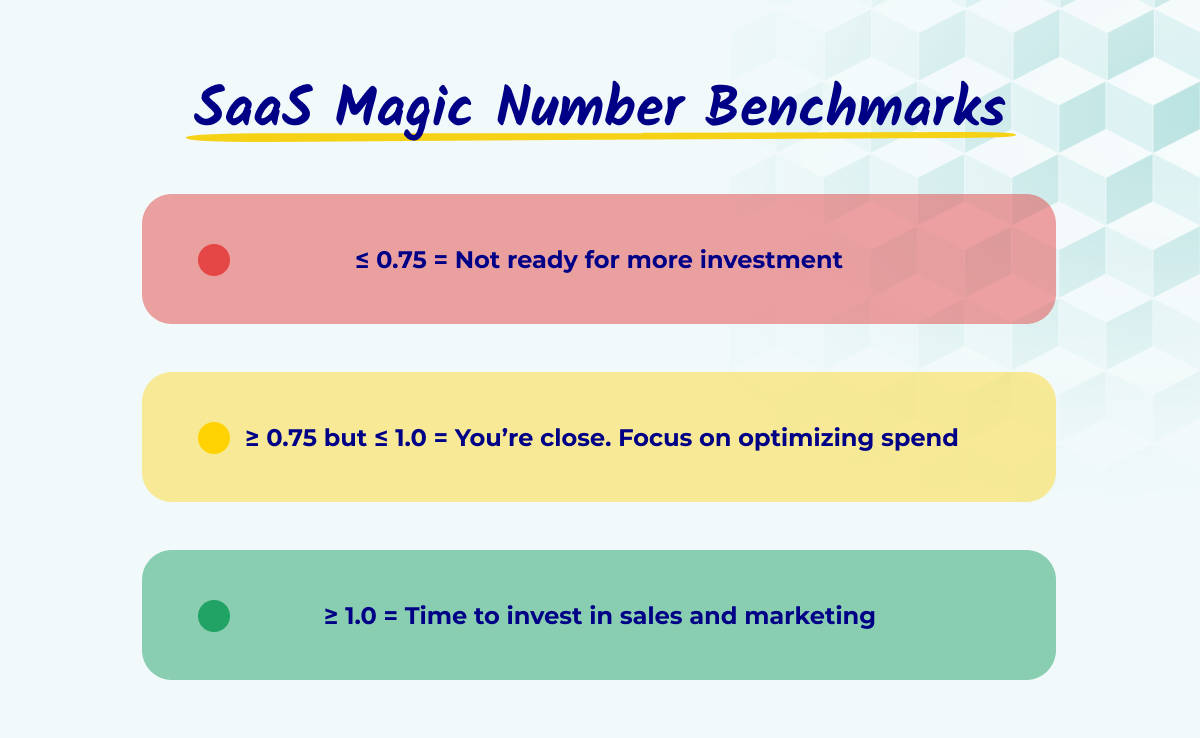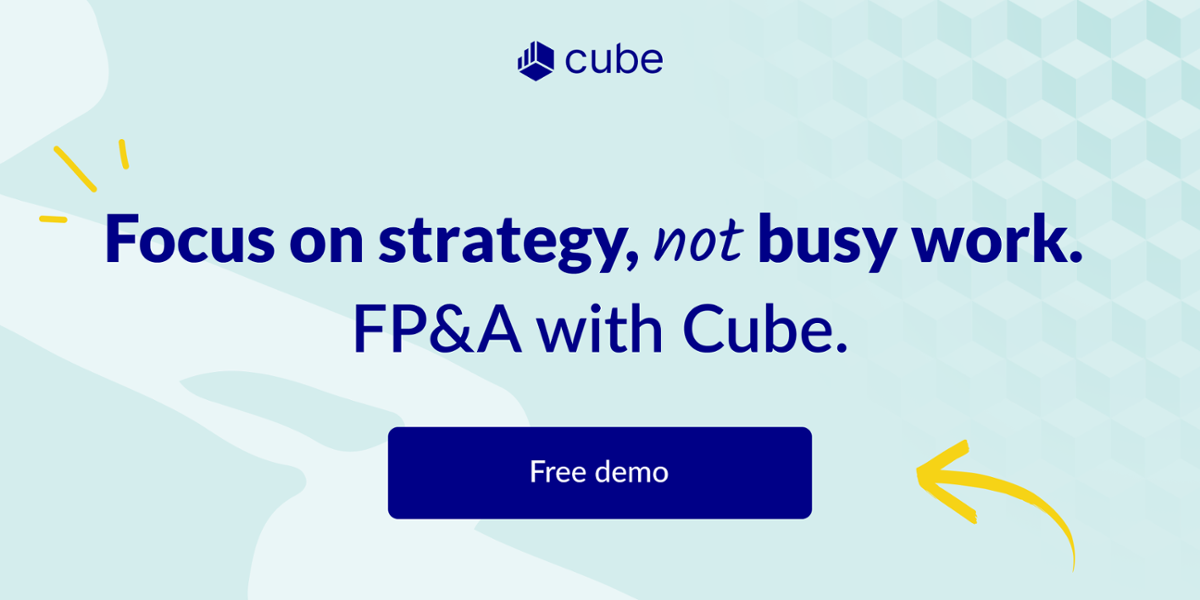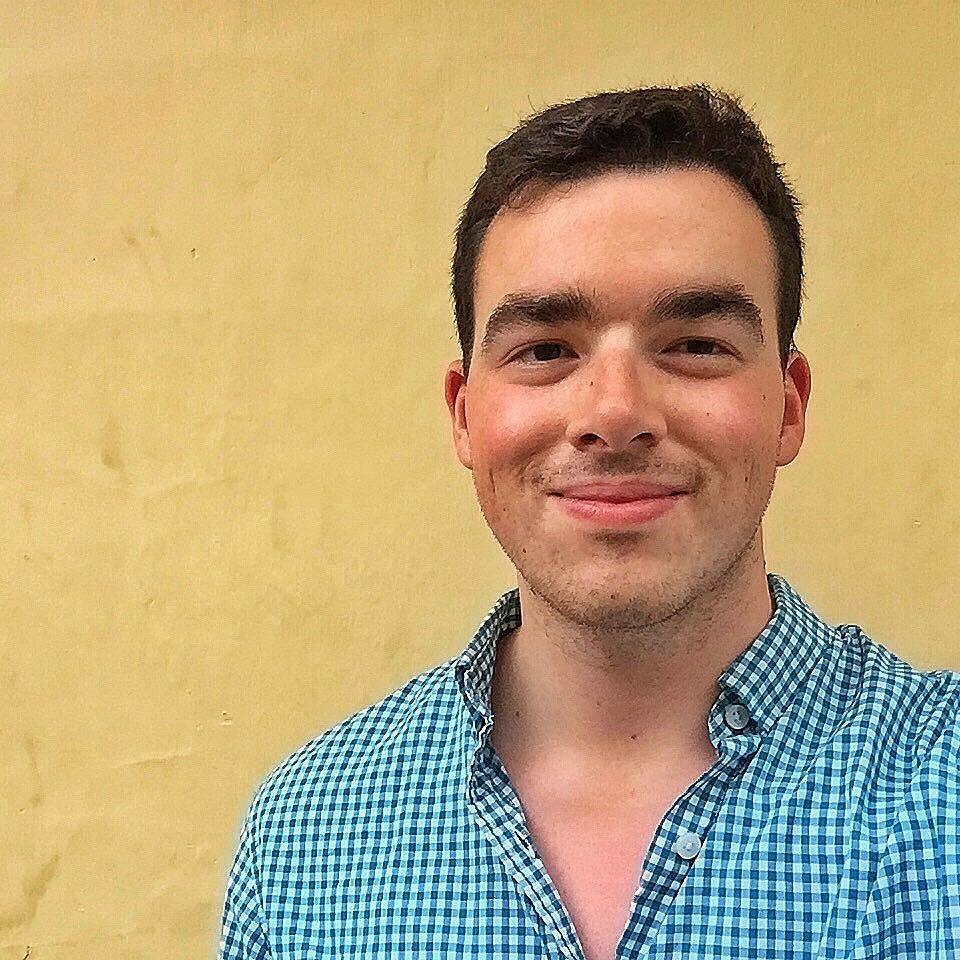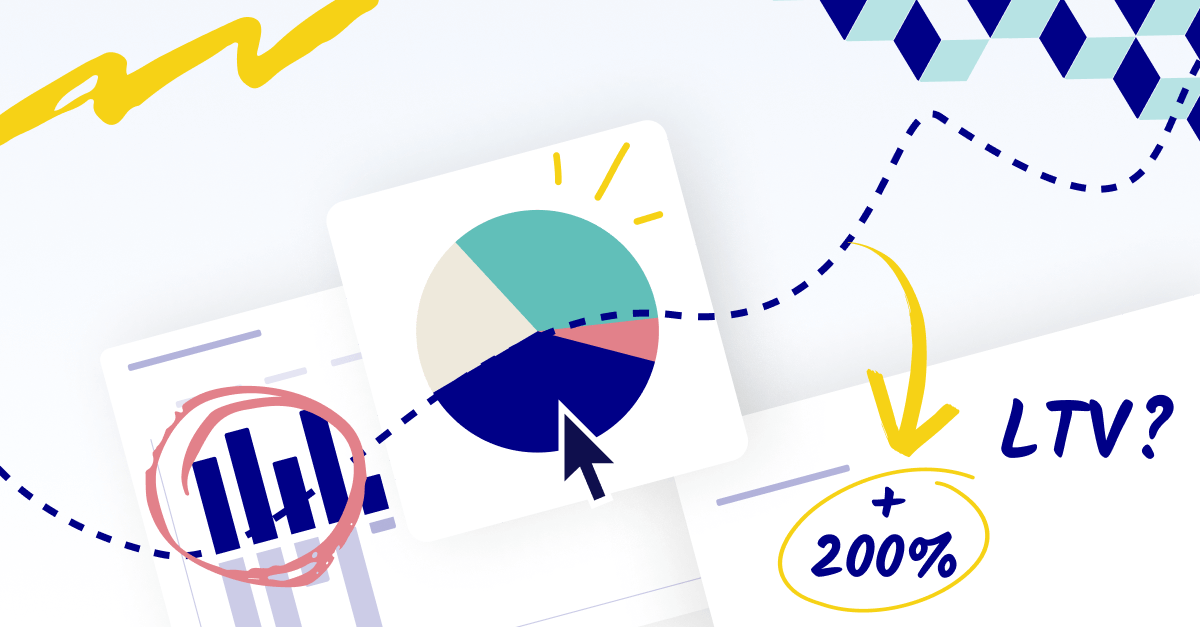Key Takeaways
- The SaaS Magic Number signals preparedness to spend more on sales and marketing.
- A magic number of over 1.0 means it's time to spend more for growth.
- A magic number between 0.75 and 1.0 means there are still some optimizations you should perform.
- Adding context to your magic number with metrics like your CAC Payback Period and churn ratios is important.
What is the SaaS magic number?
The SaaS magic number is a financial ratio that uses MRR to signal the health of a company.
How much revenue do we create for the company for every dollar we spend acquiring new customers?
The SaaS magic number tells you if you're ready for explosive growth.
Why is this important?
Knowing when it's time to pour resources into growth is useful information when growing a SaaS business.
And knowing when to pause and reexamine your marketing and messaging is equally important.
More critically, a founder who knows her metrics has more control over her bottlenecks like:
Market Calibration: Markets change, so marketing will always require adjustments. Knowing your SaaS magic number (and seeing its trend) signals when it's time to recalibrate your marketing.
Sales Adjustments: Trends in your magic number can signal that adjusting your sales methods and messaging is time. You can then focus on and refine those areas.
Cost Reduction: A higher SaaS magic number can signal that it's time to shift focus to optimizing your business's finances so that you see more of that revenue as profits.
More about SaaS magic number benchmarks
A common benchmark for the SaaS magic number is 0.5, which suggests that a company is achieving a balanced growth rate relative to its sales and marketing spend.
However, benchmarks can vary based on factors such as market dynamics, competitive landscape, and business model.
High-growth SaaS companies often strive for magic numbers above 1, indicating that they are efficiently acquiring customers and generating revenue at a rapid pace relative to their sales and marketing investment.
Conversely, a magic number below 0.5 may signal inefficiencies in customer acquisition or challenges in scaling the business.

How to calculate (and interpret) your SaaS magic number
Here's the formula to calculate the SaaS magic number:
Magic Number = 4* (QR[X] – QR[X-1]) / Sales&MarketingExpenses[X-1]
Where QR[X] is the quarterly recurring revenue for a given quarter, QR[X-1] is the quarterly recurring revenue for the preceding quarter, and Sales&MarketingExpenses[X-1] is the sum total of sales and marketing expenses from that same preceding quarter.
Let's look at an example:
| Company A |
QR |
Sales & Marketing Expenses |
| Q1 |
$2M |
$1.6M |
| Q2 |
$2.4M |
$1.8M |
| Q3 |
$3 |
- |
So our magic number for the end of Q2 is (4 * ($2.4M - $2M)) / $1.6M = 1.
And our magic number for the end of Q3 is (4 * ($3M - $2.4M)) / $1.8M) = 1.33.
But what does this mean?
How to interpret your SaaS magic number
Fortunately, the SaaS magic number is pretty clear-cut.
Here are some SaaS magic number benchmarks:
≤ 0.75: 🛑 You're not ready to invest more money into growth. Focus on optimizing your existing spend.
≥ 0.75 but ≤ 1.0: ⚠️ You're probably ready for growth, but there are still a few things to optimize.
≥ 1.0: ✅ Time to increase your sales & marketing spend and grow!
When raising capital, most firms want to see a SaaS magic number at or above 0.75.

What is a good magic number in SaaS?
It's important to consider the context of your specific business model when analyzing the SaaS magic number.
While it's easy to look at number over .75 and assume you're on the right track, its important to layer in other context as well.
What growth stage is the company at? How are market conditions? Is there a specific factor that could be affecting the magic number like customer acquisition costs or churn?
While it's easy to get excited about a magic number over .75 (and especially over 1.0) it's key to view it in context of your specific business model.
Determining a good magic number
While there is no one-size-fits-all answer to what constitutes a good magic number in SaaS, industry benchmarks and best practices can offer valuable insights.
A magic number above 1 typically indicates that a company is achieving rapid revenue growth relative to its sales and marketing spend, signaling efficiency and scalability.
However, context is crucial, and factors such as company size, growth stage, market dynamics, and business model must be taken into account.
How to improve your SaaS magic number
Since the SaaS magic number is a simple metric, the ways to improve it are also pretty simple.
Either earn more revenue or optimize your sales and marketing spend.
Or, ideally, do both.
Here are some ideas to get you started:
Sell to existing customers with expansions
The cheapest customer to acquire is the customer you already have.
And some customers could get more value from an upsell or a cross-sell.
These expansions will boost your MRR, directly boosting your SaaS magic number.
Shorten your sales cycle
Sales efficiency is incredibly important for growing SaaS businesses. But longer sales cycles are also more expensive.
A long sales cycle can also mean it takes longer to recoup your sales and marketing investment per new logo, which puts realistic limits on how quickly you can grow.
That said, shortening your sales cycle can lead to higher churn and can mean you sell to more unqualified leads, so it's important to always be testing and refining your sales cycle.
How do you calculate sales efficiency in SaaS?
If you think sales inefficiency could be negatively impacting your magic number, there are a few ways to diagnose and improve your metrics.
Beyond shortening your sales cycle, reviewing your LTV/CAC ratio is a great way to take a step back and better understand your sales efficiency.
Invest in low-cost, high-yield marketing options
When it comes to marketing, the best ROI comes from content marketing.
Investing in content marketing and SEO and cultivating a healthy relationship with your email list is a proven way to get a steady, high volume of qualified leads.
Good content is evergreen, which means that investing in content marketing means investing in assets that will continue to pay dividends for years to come.
Slash underperforming paid channels
If you're running paid advertisements, it's likely that some ads and platforms are performing better than others.
If that's the case, think about simplifying and consolidating your ads. Repeat what works and spend less on what works not as well.
In other words, you should work on optimizing your ad spend.
All this said, simply increasing your SaaS magic number for the sake of increasing it isn't the silver bullet to unicorn status.
You need other metrics to give your magic number context—and to be clear with your cash flow.
How do you increase your SaaS magic number?
Of course, there are common areas to review (like the ones discussed above) when looking to increase your SaaS magic number.
However, it's critical that you consider what makes your business model unique and not shy away from digging into business-specific variables.
What works for one of your competitors might not work for your business. Just because they increased ad spend, doesn't mean that will have the desired affect for your business to, for example.

Other considerations for the SaaS magic number
Like any metric, the SaaS magic number has its limitations.
It's still a super valuable metric. But it's not going to tell you the full picture on its own.
For example, you must consider your runway, customer acquisition cost payback periods, and overall cash flow.
Expansions or acquisitions?
Since the magic number uses Monthly Recurring Revenue, you don't know if that revenue is due to expansions or to new logos.
If the bulk of your revenue comes from expansions, then your strength in acquiring new customers is questionable.
Likewise, if most of your MRR comes from new bookings, there might be concerns over the strength of your NRR and your ability to retain customers and revenue.
CAC payback period
CAC (Customer Acquisition Cost) Payback Period is the length of time it takes to recoup the cost of acquiring a customer.
In other words, because there's a lag between when a company spends on sales and marketing and when a company acquires new customers, understanding the CAC payback period is essential to knowing how much you can allocate to sales and marketing.
Another metric to put your CAC payback period in context is the LTV/CAC ratio, which, like the SaaS magic number, is a profitability measurement and growth flag.
Gross margins
Like your CAC Payback Period, the gross margin on each product (or subscription) you sell affects your overall profits and the money you have to reinvest in the business.
The gross margin remains after subtracting COGS (cost of goods sold) from net sales revenue.
You can discern the true cost of acquiring a new customer when you understand your payback period and gross margins.
In other words: this is a metric that anchors your reality. The SaaS magic number is merely a red, yellow, or green flag. But your gross margins are a huge factor in determining how quickly you actually can grow.
Bessemer CAC ratio
The Bessemer CAC Ratio focuses on the efficiency of acquiring new customers.
In other words, your Bessemer CAC Ratio will tell you how quickly your gross margin pays for your new customers.
This is important context because the SaaS magic number doesn't account for the expense of running a business.
If your ratio is over 1.0, it means you have room to keep investing in sales and marketing. But if it's less than 1, you need to continue to monitor your spending.
(1.0 is sometimes called a Bessemer magic number.)
Here's how to calculate the Bessemer CAC Ratio:
(Gross Margin * New Annual Contract Value[x]) / CAC[x-1]
Churn
The SaaS magic number doesn't account for churn, so if you're not keeping customers (or if you have high revenue churn) then your magic number is painting a rosier picture than reality.
So it's always a good idea to provide context here.
Additionally, if your churn rates are too high, you're essentially not getting your customer acquisition costs to level out.
Keeping churn low is a top priority for businesses poised for high growth.
Emerging trends and innovations in SaaS metrics
As the Software as a Service (SaaS) industry continues to evolve, so too do the metrics used to measure success and drive growth. Let’s explore the latest trends in SaaS metrics, uncovering new approaches to measuring efficiency, effectiveness, and growth beyond the traditional magic number.
Predictive Analytics for Churn Prevention: Predictive analytics is revolutionizing how SaaS companies approach customer churn. By leveraging machine learning algorithms and predictive models, companies can identify early warning signs of churn and take proactive measures to prevent it.
Incorporating Customer Lifetime Value (CLV): Customer lifetime value (CLV) is gaining traction as a vital metric in the SaaS world. Unlike traditional metrics that focus on short-term revenue, CLV looks at the long-term value that customers bring to a business over their entire relationship.
Embracing Holistic Metrics Frameworks: Beyond individual metrics, there is a growing trend towards adopting holistic metrics frameworks that provide a comprehensive view of business performance. These frameworks integrate a wide range of metrics, including financial, operational, and customer-centric indicators, to paint a complete picture of organizational health.
Exploring Non-Financial Metrics for Success: In addition to traditional financial metrics, SaaS companies are increasingly focusing on non-financial metrics that reflect broader aspects of success, such as customer satisfaction, product usage, and market share.
Conclusion: all about the SaaS magic number
Now you know how to calculate and interpret your SaaS magic number.
You also learn how to improve it and what other context you should give it.
Now I want to turn it over to you: which strategy in this article will you try first?
Are you going to go all-in with upsells? Or are you going to invest in content marketing? Maybe you're ready to begin pouring money into sales and marketing as is.
Either way, share this on LinkedIn and tag us to keep the conversation going.



.png)









.png)

.png)




.png)
